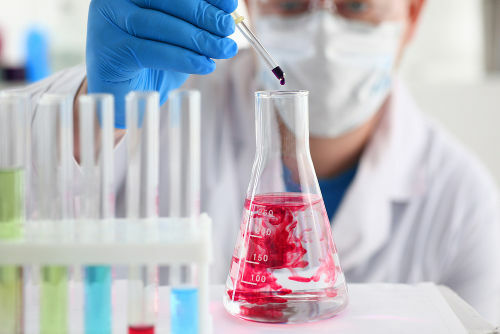There are several factors that can change the enthalpy variation of a process, such as temperature, pressure, physical state, mole number and allotropic variety of the compound. For example, below are three carbon dioxide formation reactions under the same temperature and pressure conditions. However, in each one an amount of material was used for the reagents. As a result, the enthalpy variation of each reaction gave a different value:
Ç(graphite) + O2(g) → CO2(g) ∆H = -393 kJ (25°C, 1 atm)
½ C(graphite) + ½ the2(g) → ½ CO2(g) ∆H = -196.5 kJ (25°C, 1 atm)
2C(graphite) + 2 O2(g) → 2 CO2(g) ∆H = -786 kJ (25°C, 1 atm)
However, when the enthalpy change value is measured for 1 mole of substance under standard conditions (when the substance is in its most stable allotropic form, at a temperature of 25°C and under a pressure of 1 atm), it is called standard enthalpy.
If all reagents and products are in the standard state, the enthalpy variation will be indicated by the following symbol ∆H0, remembering that the enthalpy variation is given by:∆H = HPRODUCTS - HREAGENTS.
The standard enthalpy is important because it serves as a reference standard. For example,it was adopted that for all simple substances under standard conditions the enthalpy value is equal to zero.
For example, hydrogen gas (H2), at 25 °C, under 1 atm, in the gaseous state H0= 0. If he is in any other condition, his enthalpy will be H0≠ 0.
Do not stop now... There's more after the advertising ;)
When the simple substance has allotropic varieties, the H value0= 0 will be assigned to the most common allotropic variety. For example, oxygen has two allotropic forms, that of oxygen gas (O2) and ozone (O3), oxygen gas is the most common, so it has H0= 0 and ozone has H0≠ 0.
See three more examples:
- Carbon:
the Cgraphite has H0= 0 and the CDiamond presents H0≠ 0. - Phosphor:
White phosphorus has H0= 0 and the red phosphorus has H0≠ 0. - Sulfur:
Rhombic sulfur has H0= 0 and monoclinic sulfur has H0≠ 0.

Knowing this, it is possible to determine the enthalpy of substances that are not simple, but which are formed by simple substances. For example, consider the following reaction:
Yn(s) + O2(g) → SnO2(s) ∆H = -580 kJ (25°C, 1 atm)
We can calculate the enthalpy of SnO2(s) (HSnO2) in this reaction, as we know that the enthalpies of the two reactants is equal to zero, as they are simple substances:
∆H = HPRODUCTS - HREAGENTS
∆H = HSnO2 - (HYn + HO2)
-580 kJ = HSnO2 – 0
HSnO2= - 580 kJ
The value was negative because its enthalpy is less than the enthalpy of the reactants and not because its energy content is negative, as this would not be possible.
By Jennifer Fogaça
Graduated in Chemistry
Would you like to reference this text in a school or academic work? Look:
FOGAÇA, Jennifer Rocha Vargas. "Standard Enthalpy"; Brazil School. Available in: https://brasilescola.uol.com.br/quimica/entalpia-padrao.htm. Accessed on June 28, 2021.

